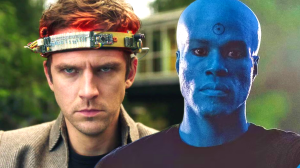Game trailers used to be one of the more thrilling aspects of a potential new release, and to a degree, they still are. After all, they are often many people’s first quick glimpse into a thrilling new video game on the horizon. Jaw-dropping visuals or a pinch of gameplay were enough to make gamers count down the days until launch. But today, something has changed. Modern game trailers no longer spark the same level of hype or confidence, with emphasis on the confidence portion. Instead of excitement, many who watch game trailers these days leave exhausted or simply indifferent.
Videos by ComicBook.com
Two main issues stand out: game companies have repeatedly overpromised and underdelivered, and many trailers have lost their ability to excite. Flashy previews that fail to reflect the actual gameplay have slowly eroded the trust between studios and players
Overpromise and Underdeliver

For years, game trailers have been filled with promises that rarely make it into the final product, or at least not in the way they were advertised. Sometimes studios build entire marketing campaigns around features that never make it into the final game. This disconnect between what is advertised and what players actually get has been a key factor in breeding disappointment. And for that sense of disappointment to stick, it needs to happen repeatedly, which is exactly what players have experienced over the past several years.
Take any recent high-profile game that launched with critical bugs, missing content, major performance issues, and/or gameplay that felt less polished than the trailer suggested. The reaction is almost always the same: backlash and frustration. When trailers show a vision that feels impossible to reach, players stop trusting them. Trailers still do build excitement, but with that excitement comes an air of skepticism and distrust.
This problem often starts early in development. Studios create trailers with ambitious concepts, sometimes before gameplay is finalized. By the time the game ships, compromises, technical limits, or even full-on design changes mean the trailer no longer matches reality. To a degree, this is acceptable, but when the final product is a far cry from the original trailer that was released, people will notice, and they will point it out, even if it means beating a dead horse in the process. The result is players feeling misled, and that’s when the negative player reviews start to roll in.
Cinematics Over Gameplay

Another major issue with modern trailers is the shift away from showing real gameplay. Instead, many trailers lean heavily on pre-rendered sequences or raw cinematics, which may present an interesting picture, but tell the player nothing about the actual game itself. While these can look impressive, they do not give players a true sense of what the game will be like to play. Will they still generate hype for the title? Ultimately, yes. Interest is interest, and if a game title can create public interest, anything perceivable as a positive for it will generate hype.
The problem, though, is that cinematic trailers tell a story but often do not reveal the core gameplay itself. For new IPs or upcoming studios, this can leave players guessing if the gameplay will be fun or even resemble the trailer. Some people might even be confused about the genre of a game, even after viewing a trailer of this type. Even for well-known franchises, it is generally seen as annoying when the gameplay shown is clearly pre-rendered or heavily edited footage.
The best trailers mix cinematic storytelling with genuine gameplay moments. Without this balance, hype becomes hollow. Players become wary because they have witnessed too many trailers that look amazing on the surface, but do not result in a satisfying game, by the end result.
Player Fatigue and Skepticism

In today’s gaming sphere, gamers have been burned by high-profile flops and broken promises, and that affects the perception of how trailers are viewed. Many now approach trailers with a mix of skepticism and genuine caution or optimism. This wariness is healthy in some ways because it forces studios to be more honest and deliver better products if they want money for it. But it also means that trailers no longer have the automatic hype-building power they once did. Even a well-crafted trailer might be met with a “We will see if the game lives up to this,” instead of the raw excitement the studio was probably going for.
The rise of early access, open betas, and day-one reviews have also changed the playing field. Players do not just rely on trailers anymore, because they don’t have to. They can watch, or even play, hours of real gameplay before buying a product. This transparency has helped reduce blind hype but also highlights when trailers overpromise.
Make no mistake, though: game trailers are still important. They are often the first look at a game and shape the initial buzz. But when trust breaks down, studios lose a powerful tool for advertising their products. Overpromising and underdelivering damage a brand’s reputation in the long run and make marketing less effective. There is always a chance for redemption, but who wants to launch a game starting 10 feet underground in terms of expectations?

Players want trailers that show real gameplay and communicate a clear vision that sets reasonable expectations. When trailers align closely with the final product, they can still generate genuine excitement and anticipation. A perfect example of this is what FromSoftware’s Elden Ring’s official gameplay trailer showcased, several months before its release. In hindsight, it was extraordinarily accurate to the final product, and the results speak for themselves.
The death of hype in game trailers is less about trailers themselves and more about broken trust. When studios promise the moon and deliver far less, it chips away at excitement and confidence. The best way to revive hype is to bring honesty and authenticity back into marketing. Players want to believe in what they see, but only if what they see matches the game they get. Changes happen behind the scenes during development, and that’s normal. But the consumer only sees what is shared, so it’s up to developers to decide the right time to show their game and when it’s better to wait.









